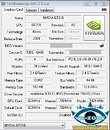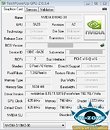Tuesday, June 30th 2009

GeForce G 210 and GT 220 Surface
DirectX 11 isn't far from its being an official industrial standard. Both NVIDIA and AMD have high-end graphics processors supporting the standard in the works, though it is expected that by the time DirectX 11 reaches the masses, we will be into 2010. On the course, both companies have the time to perfect their designs on the new 40 nm silicon fabrication technology, which will build the first waves of DirectX 11 GPUs. One of the best ways of doing this is by building products based on the current architecture on the new process, and testing the foundry-companies' abilities to handle large market demands, while benefiting from low-manufacturing costs. Following AMD's introduction of the RV740, NVIDIA recently announced a new class of mGPUs based on the 40 nm process, and is having concrete plans of selling their desktop versions by this October.
Two of the important starting points for NVIDIA are the GT218 and GT216 graphics processors. The two have already being assigned mGPU branding of GeForce G 210M and GeForce GT 230M respectively. Their desktop versions are to be branded GeForce G 210 and GeForce GT 220 respectively. VR-Zone sourced the specifications of these GPUs, by running them on the upcoming GeForce 190.15 drivers.To begin with, the GT218 is the entry-level 40 nm NVIDIA GPU. It is small enough to be integrated with an MCP chipset, if NVIDIA wishes so. The desktop version, GeForce G 210 (GT218/D10M1) has 24 shader processors, 4 ROPs, a 64-bit wide DDR2/GDDR3 memory interface, and clock speeds (as read by GPU-Z) of 603/1425/790 MHz (core/shader/memory). NVIDIA is ready with the reference design PCBs codenamed P690 and P691, which support GDDR3 and DDR2 memory respectively. The target prices of these products range between US $30~35, very much the grass-root.
The GT216 on the other hand, is twice as powerful (specs wise) as the GT218, and interestingly, half as powerful as the GT215 (mGPU product GeForce GTS 250M/260M). The desktop product is named GeForce GT 220 (GT215-300/D10M2). It features 48 shader processors, 8 ROPs, a 128-bit wide DDR2/DDR3/GDDR3 memory interface, and up to 1 GB of memory. At least one variant comes with the clock speeds of 625/1373/790 MHz (core/shader/memory). Its price range is $55~60. Products based on both these DirectX 10.1 compliant GPUs are expected to arrive in October.
Source:
VR-Zone
Two of the important starting points for NVIDIA are the GT218 and GT216 graphics processors. The two have already being assigned mGPU branding of GeForce G 210M and GeForce GT 230M respectively. Their desktop versions are to be branded GeForce G 210 and GeForce GT 220 respectively. VR-Zone sourced the specifications of these GPUs, by running them on the upcoming GeForce 190.15 drivers.To begin with, the GT218 is the entry-level 40 nm NVIDIA GPU. It is small enough to be integrated with an MCP chipset, if NVIDIA wishes so. The desktop version, GeForce G 210 (GT218/D10M1) has 24 shader processors, 4 ROPs, a 64-bit wide DDR2/GDDR3 memory interface, and clock speeds (as read by GPU-Z) of 603/1425/790 MHz (core/shader/memory). NVIDIA is ready with the reference design PCBs codenamed P690 and P691, which support GDDR3 and DDR2 memory respectively. The target prices of these products range between US $30~35, very much the grass-root.
The GT216 on the other hand, is twice as powerful (specs wise) as the GT218, and interestingly, half as powerful as the GT215 (mGPU product GeForce GTS 250M/260M). The desktop product is named GeForce GT 220 (GT215-300/D10M2). It features 48 shader processors, 8 ROPs, a 128-bit wide DDR2/DDR3/GDDR3 memory interface, and up to 1 GB of memory. At least one variant comes with the clock speeds of 625/1373/790 MHz (core/shader/memory). Its price range is $55~60. Products based on both these DirectX 10.1 compliant GPUs are expected to arrive in October.


9 Comments on GeForce G 210 and GT 220 Surface
looks like these chips use 24sp clusters, and 1 ROP per 16-bits of memory bus, just like GT200... interesting....
Not too sure about DX9 thou.